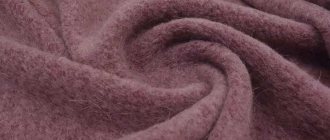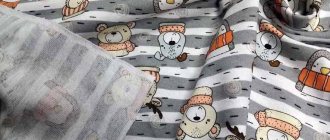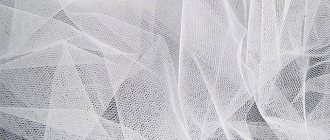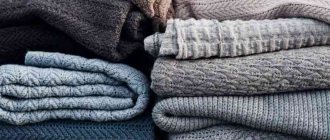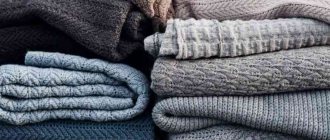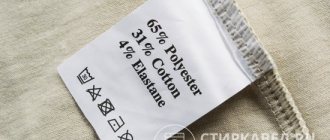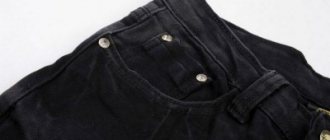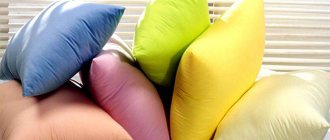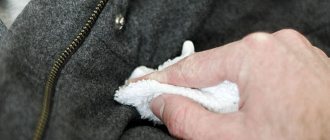Share on social media networks:
Along with natural fabrics, artificial fabrics are widely used today for the production of various clothing and household items. One of the most popular is microfiber, so knowing how to wash microfiber is a must for every housewife. Why is this so important? Yes, it’s simple - with the right approach in the process of cleaning things and cleaning the house, you will be able to maintain the attractiveness of clothes and objects much longer, and then you won’t have to think long about how to hide the spread stains or even go to the store to buy a new product.
What is microfiber?
Microfiber is a unique modern development of synthetic material based on polyamide, polymers and polyester. As a result of production, the finest fiber is formed, which is then woven into fabric.
Its properties make our daily chores so much easier that today it is almost impossible to do without microfiber. This material is durable, does not pill, does not fade, practically does not fade and withstands chemical exposure well.
It is quite difficult to list all the things for which such fabric is used - the range is very large. Most often you can find:
- rags and napkins for cleaning the house;
- bed linen and even underwear;
- mop attachments;
- furniture, including for children;
- strollers and car seats.
Important! Take into account the fact that if you properly care for the item, it will serve you well for at least 5 years and can easily withstand even up to 500 washes. That is why it is important to clarify before using the item how to properly wash microfiber. In this process, the most important thing is to preserve the softness of the canvas, its absorbent properties, texture and color. Only with this approach can you save on purchasing new things.
What kind of fabric is it made of?
Microfiber is an interweaving of the finest fibers that are extremely durable. The fabric contains nylon, polyester, and other synthetic polymers.
The material is durable - even frequent use rarely damages the fibers. The fabric has increased properties to absorb moisture - even a tiny scrap can absorb liquids almost 10 times its weight.
Various products are sewn from microfiber:
- bed sheets;
- tablecloths;
- cleaning wipes;
- curtains;
- car seats;
- furniture upholstery;
- items of underwear.
Microfiber car seats
Special microfiber for glasses is also made from synthetic fabric - the material perfectly polishes surfaces without leaving lint particles, streaks, or stains. Mop heads are another useful product that uses synthetics.
How to wash microfiber?
In principle, as already noted, microfiber perfectly retains its strength when exposed to chemical influences. Therefore, for washing it you will need:
- universal washing powders;
- soap - baby and laundry soap;
- liquid soap and dishwashing detergent;
- stain removers.
Important! Several requirements that are best adhered to when choosing a cleaning product:
- the alkaline level should not exceed 10.5 ph;
- bleaches do not contain chlorine;
- It is better not to use conditioners, as they can reduce the absorbency of microfiber.
To clean microfiber furniture, additionally prepare:
- soft brush;
- vacuum cleaner;
- sponge - preferably unpainted, neutral color;
- cotton towel.
What washing products should I use?
An important rule that must be followed is that there should not be a lot of powder .
It's a good idea to check the label before purchasing a detergent for this fabric . For example, you should discard the powder if it contains bleaching components. It is recommended to look for packaging that states that the pH is less than 10 units . The ideal option would be to wash with powder intended for children's products.
By the way! Microfiber can be easily washed with regular laundry soap. You can grate it and add it to a bowl of water. This procedure is suitable in cases where soaking is required. Another way is to rub particularly dirty areas with a bar of soap, and then rinse the product.
When to wash microfiber?
Depending on what items you plan to wash and how often you use them, choose the appropriate washing schedule:
- rags for household use and for cleaning cars will require daily washing, especially if they become very dirty after use;
- for bed linen and other things, once every 1-2 weeks is enough, although it is better to wash socks after each wearing;
- It is better to clean furniture, strollers and car seats at least once every 3-6 months.
How to wash microfiber in a machine?
For washing such fabric, both hand and machine washing are quite acceptable. If you don’t like fiddling with basins and always use a machine, follow these recommendations:
- Do not load the drum “to capacity” - ideally 80%.
- Select the temperature mode depending on the purpose of washing:
- for regular - 40-60 degrees;
- for disinfection - temperatures up to 95C are allowed.
- Before the procedure, sort all your items - rags and microfiber cloths are washed separately from other items.
- Do not stack fadeable microfiber fabrics together. This fabric does not fade, but may take on a different shade from a fading item.
- Initially, spin clothes, bedding or microfiber cloths in a pre-wash - in this case, the cleaning effect will be much better.
- Follow the dosage of the selected powder in accordance with the manufacturer's recommendations. A larger quantity is allowed if the fabric is very dirty. To choose a reasonable amount, use our calculations given in the article “How much powder to pour into the washing machine?”
Ironing - can it be done?
Microfiber is a fabric that does not tolerate high temperatures. Even at 60 degrees, the material is easily deformed, and folds or wrinkles cannot be eliminated. To prevent damage to your favorite things, it is better to avoid using an iron.
If the items become slightly wrinkled during washing, it is better to dry them by laying the items on a soft cloth that absorbs moisture well. Straighten the towels and smooth them a little with your hands.
It happens that things are so wrinkled that you can’t do without using an iron. In such cases, use cotton napkins - place the product between them and iron at minimum temperature.
ARTICLE FOR YOU
How to properly wash staple clothes and linen: in a washing machine and by hand
It is better to start the process from a small corner - if the fabric begins to deform under the influence of the iron, it is better not to take risks and completely abandon ironing.
How to wash microfiber by hand?
It is quite easy to wash such fabric by hand, and even heavy stains can be removed without much effort without using a washing machine. Choose the method that suits you and follow the instructions.
Method 1
If things are not very dirty, proceed like this:
- Wet each rag.
- Prepare a paste of baking soda and water.
- Apply to each item.
- Leave for 1 hour.
- Fill a basin or bowl with warm water.
- Dissolve some liquid soap or powder.
- Place all the rags in the solution and scrub a little.
- Rinse well under running warm or cold water when all the dirt has come off.
- Fill a bowl with warm water and dissolve a little citric acid or juice.
- Do the final rinse in this solution.
Important! If you are not trying to get a perfectly fresh smell from microfiber items, you can safely skip the last 2 points.
Method 2
If synthetic items are very dirty and you are wondering how to properly wash microfiber to perfect cleanliness, proceed this way:
- Prepare a soap solution with hot water in a bucket.
- Soak all rags, items or removable fabric parts from the car seat or stroller in it.
- Leave it overnight.
- Remove from solution in the morning and rinse well.
- If minor stains remain, lather each item again and scrub.
- Rinse and hang to dry.
Important! After soaking, you can also machine wash at a higher temperature. So you will have to spend little of your own energy.
Handwash
Getting rid of stains without a washing machine will not be difficult: all dirt from microfiber can be easily removed with soap and powder.
Basic washing rules:
- put the products in warm water, the temperature of which should not be higher than 50 degrees;
- boiling is unacceptable: microfibers become deformed and the towel becomes unusable;
- use laundry soap, non-aggressive washing powder, liquid detergent;
- pre-soak heavily soiled kitchen and floor rags for 1 hour;
- there is no need to rub the material vigorously, stains can be easily removed using detergents;
- rinse things only in clean water, without conditioner;
- dry synthetics in the room or outside away from colored laundry: although microfiber itself does not fade, it quickly absorbs paint.
Advice It is better to use a powder with a pH of less than 10 units.
How to clean furniture with microfiber upholstery?
Before cleaning microfiber furniture yourself, do the following:
- Carefully read the manufacturer's recommendations on the label or in the data sheet for the item.
- If you are not sure about the choice of product, call the company where you purchased the item and ask a consultant for all the information you need.
- Before you commit to large-scale cleaning, test the fabric's reaction to the detergent on an inconspicuous small area.
Once you have prepared all the necessary equipment and understood all the rules, proceed as follows:
- Remove all small debris and dust from the surface of the furniture using a vacuum cleaner with a soft brush.
- Prepare a mildly concentrated soap solution with cold water—liquid hand soap or dishwashing detergent will do.
- Soak a terry towel or sponge in the solution and wring it well so that excess moisture is not absorbed into the fabric on the furniture.
- Consistently treat the surface in small areas with gentle wiping movements.
- Brush the surface to restore the texture of the upholstery once it's dry.
Important! Do not wet the upholstery too much so that chemicals and water do not penetrate deep inside - in this case, the furniture may begin to rot. For drying, you can use a hair dryer for a short time on the weakest setting with a low temperature, but it is still better to leave the upholstery to dry in natural conditions.
HOW LONG CAN MICROFIBER BE USED?
Ultramicrofiber is the most durable and can be used much longer than budget microfiber or cotton rags. The life of microfiber is usually measured in number of washes, not weeks, months or years. If the packaging does not indicate the number of washes, be sure to ask the seller or manufacturer's representative for this information. Ideally, microfiber fabric should withstand this cycle - three days in use, then washed (and washed well in the process). A cycle of two days of use - wash is possible. This applies to regular, maintenance cleaning. Based on the stated life of 500 washes and a three-day cycle, the life of microfiber should last about five years. In reality, this calculation only applies to ideal usage conditions. Companies that claim a certain number of washes for their products typically test their fabrics in laboratory conditions, where the napkins are washed in six-week cycles, 24/6, using standard laundry detergents. The actual lifespan of microfiber depends on the surface for which it is used, the density of the fabric, the quality, and how the cloth is washed. Generally, the higher the microfiber density, the higher the quality.
Useful tips
- Minor faded stains on rags are quite appropriate - they do not affect the quality of further cleaning of various items, this is not the kind of dirt that will transfer to another surface upon contact. Therefore, the level of cleanliness in this case is more of an aesthetic issue rather than a practical one.
- If you decide to use a dryer to speed up the drying of microfiber, do it separately from other things. The lint from them will settle on this synthetic fabric and the entire washing procedure will eventually go down the drain.
- When cleaning furniture, do not use very powerful vacuum cleaners or intensive modes - they may create wrinkles that cannot be straightened out.
- To remove stains, do not use aggressive solvents and chlorine stain removers - they can not only change the shade, but also disrupt the structure of the fabric, and accordingly reduce its strength. If you need to remove tough coffee, juice or grease stains, use regular baking soda or salt.
